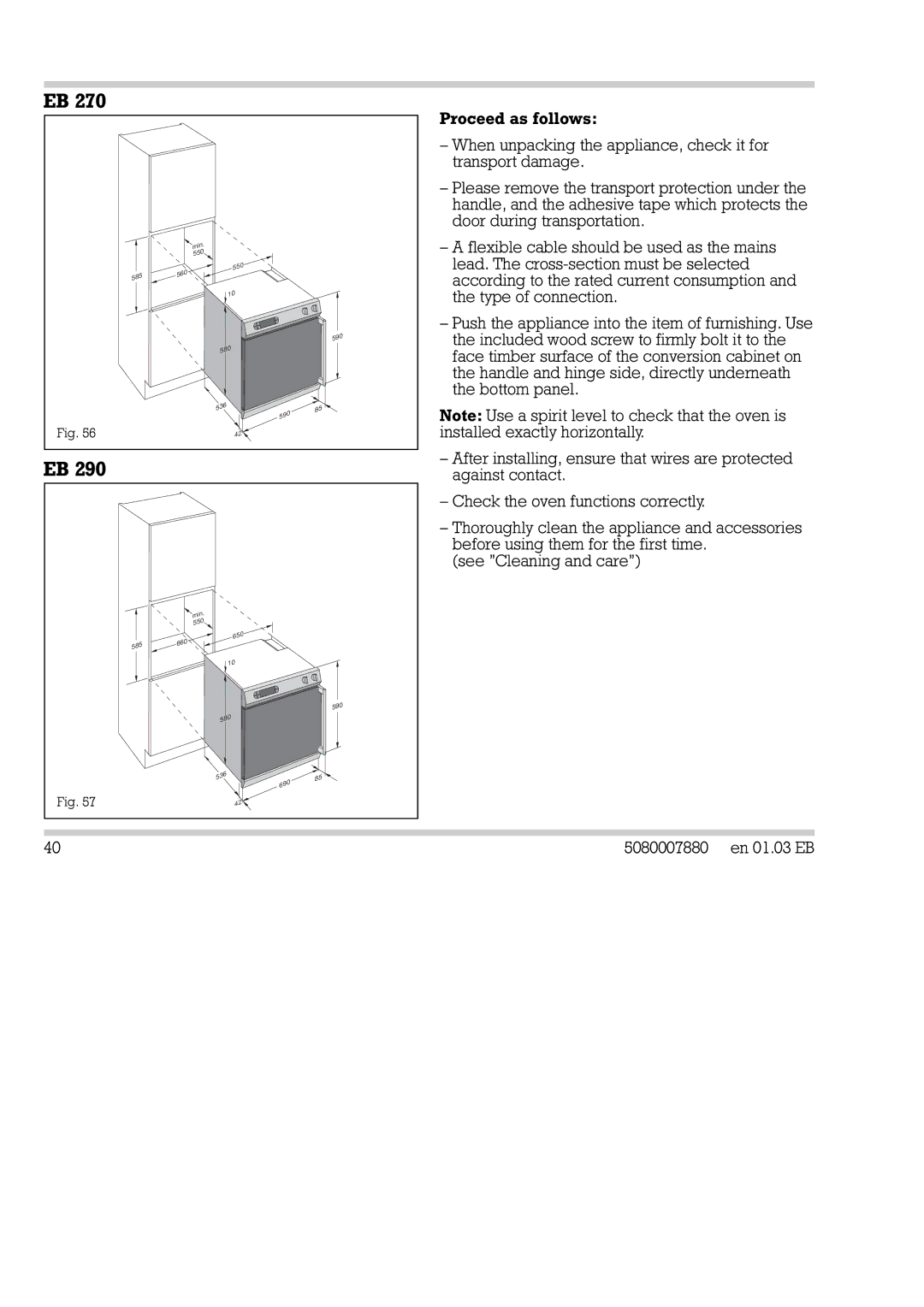
EB 270
|
| min | . |
|
|
| 550 |
| |
|
| 560 | 550 |
|
| 585 |
|
| |
|
|
|
| |
|
|
| 10 |
|
|
|
|
| 590 |
|
|
| 580 |
|
|
|
| 536 | 85 |
|
|
|
| 590 |
Fig. 56 |
|
| 42 |
|
EB 290
|
| min | . |
|
|
| 550 |
| |
|
| 660 | 650 |
|
| 585 |
|
| |
|
|
|
| |
|
|
| 10 |
|
|
|
|
| 590 |
|
|
| 580 |
|
|
|
| 536 | 85 |
|
|
|
| 690 |
Fig. 57 |
|
| 42 |
|
Proceed as follows:
–When unpacking the appliance, check it for transport damage.
–Please remove the transport protection under the handle, and the adhesive tape which protects the door during transportation.
–A flexible cable should be used as the mains lead. The
–Push the appliance into the item of furnishing. Use the included wood screw to firmly bolt it to the face timber surface of the conversion cabinet on the handle and hinge side, directly underneath the bottom panel.
Note: Use a spirit level to check that the oven is installed exactly horizontally.
–After installing, ensure that wires are protected against contact.
–Check the oven functions correctly.
–Thoroughly clean the appliance and accessories before using them for the first time.
(see ”Cleaning and care”)
40 | 5080007880 en 01.03 EB |
